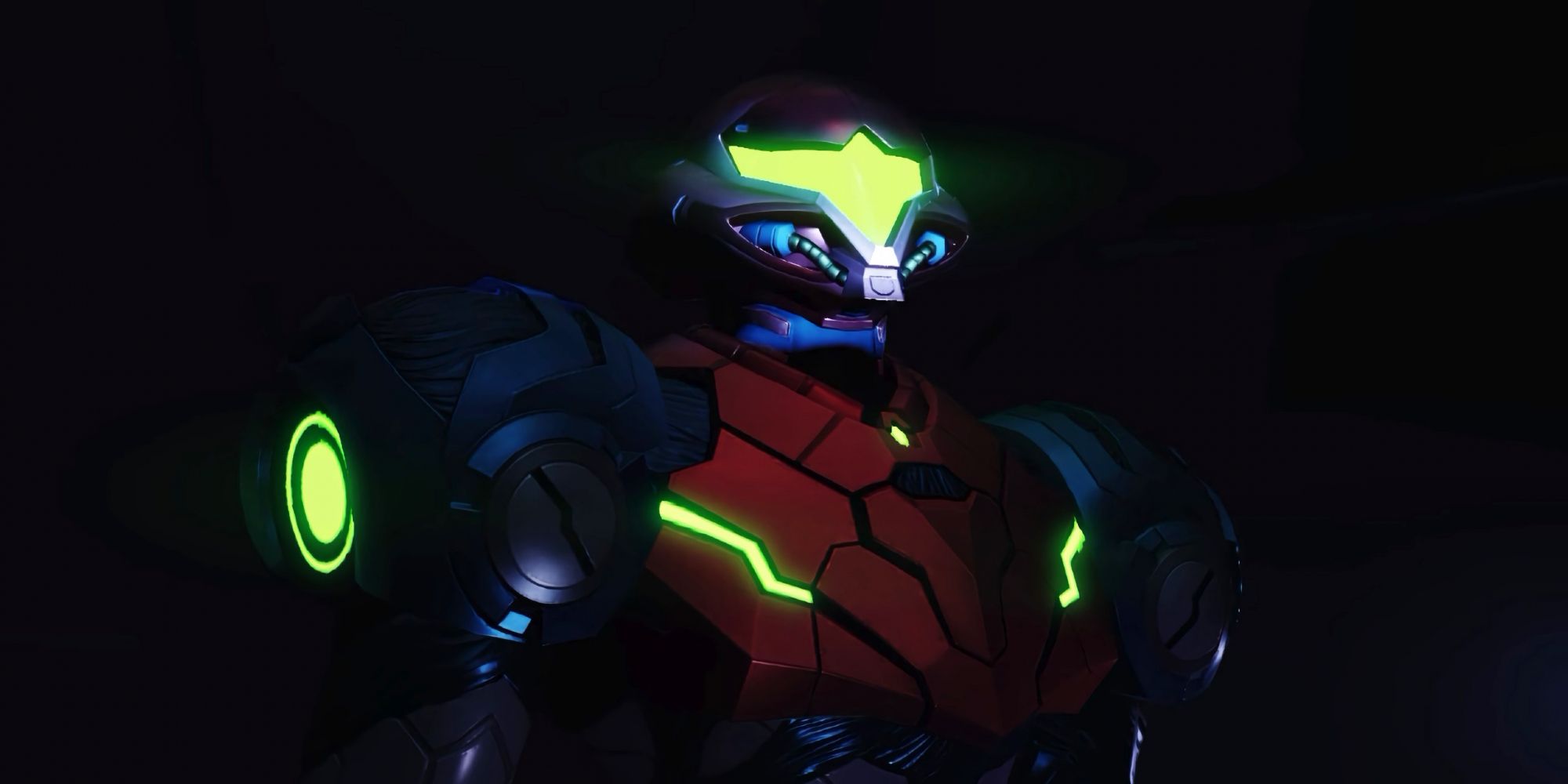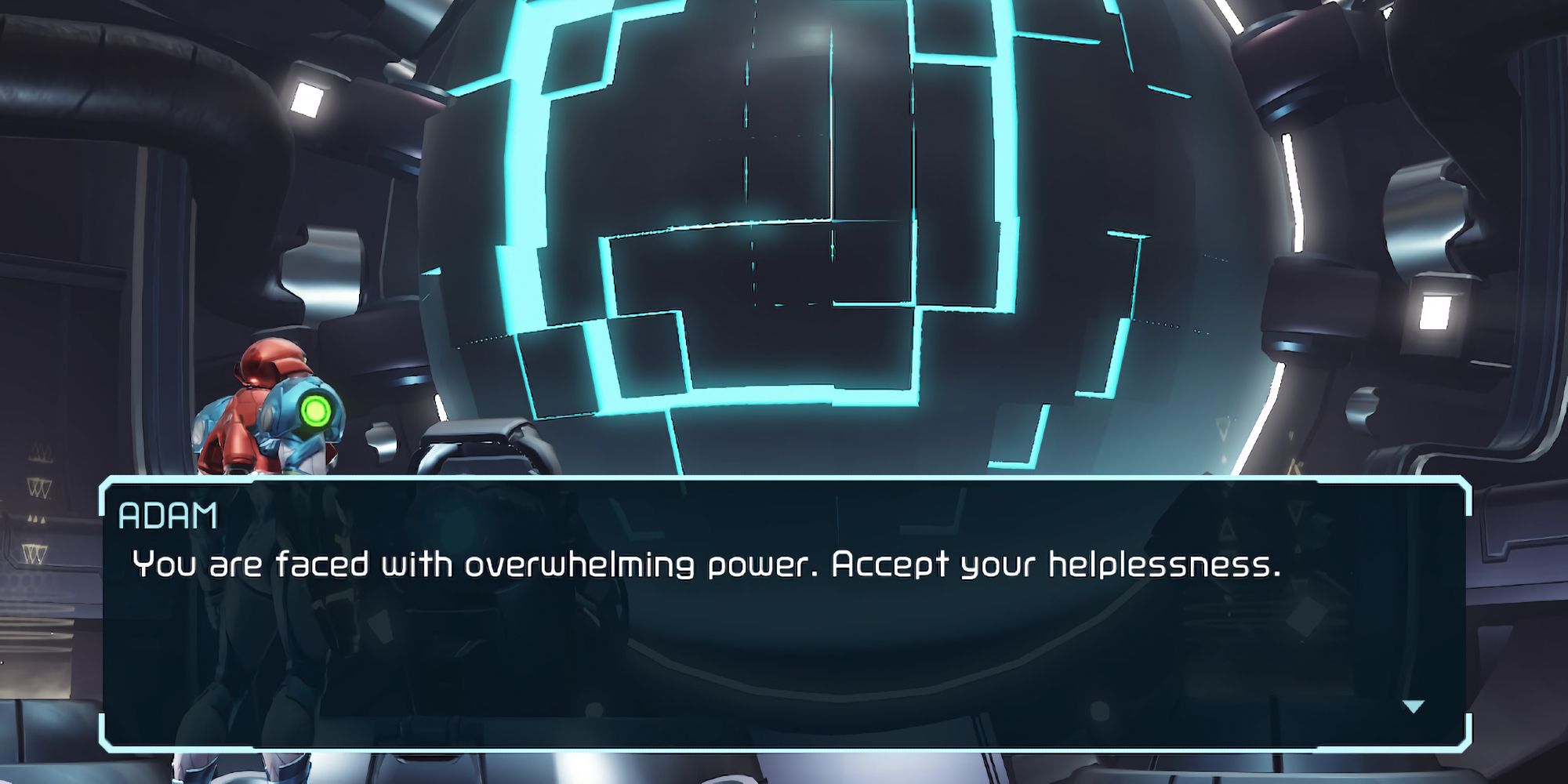Metroid Dread's title suggests horror and terror; in practice, this comes comes mainly from the haunting E.M.M.I. robots that stalk protagonist Samus in certain areas of the game. However, while it received a Teen rating from the ESRB for "Fantasy Violence" and "Animated Blood," the game's horror elements don't necessarily shirk Nintendo's proclivity for family-friendly entertainment, as Metroid Dread is likely not too scary for older kids.
Metroid Dread, in general, is not very horrifying. Samus travels to the planet ZDR to investigate reports of the mysterious X Parasite's return, and she finds herself surrounded by ruins of a once-great civilization. The atmosphere can at times be a bit off-putting in the solitude of its abandoned locations, but a large majority of the areas are well lit. Metroid Dread's various enemies are not very scary, either, and can usually be seen and observed before they attack the player.
One cause for fear could stem from large bosses inducing megalophobia, but these still have to fit within the gameplay's scale, so they aren't exceptionally massive. The most persistently scary element of Metroid Dread is the E.M.M.I. robots. These hostile creations aren't necessarily frightening, though, since they don't rely on gimmicks like jump scares. Instead, the game's title is accurate, as the best word to describe the style of horror provided by Metroid Dread's E.M.M.I.s is indeed "dread."
Metroid Dread's Scares Come From Expressed Danger
Metroid Dread goes to great lengths to make players understand the power of the E.M.M.I.s. As seen above, Samus' AI assistant, Adam, even plainly states, "You are faced with overwhelming power. Accept your helplessness," in regards to the nearly indestructible robots. The gameplay does a good job of backing up this claim, too. At one point, players have to retrieve a weapon upgrade from deep within an E.M.M.I. zone in order to destroy one, and whenever Samus is captured by one, there are only two, incredibly difficult opportunities to counterattack the robot's insta-kill move. Navigating zones occupied by E.M.M.I.s is stressful, so young players may especially feel apprehension toward venturing into one.
Still, despite their terrifying power, the E.M.M.I.s aren't necessarily horrifying. Metroid Dread constantly puts them in front of Samus and frequently reiterates how to avoid them - the E.M.M.I.s don't lurk in and strike from the shadows. Special doors and music plainly mark E.M.M.I. zones, and the robots beep louder as they get closer to Samus. They hunt through sound vibrations, and Metroid Dread shows players an obvious, yellow effect on the screen when the E.M.M.I.s can hear them. While Metroid Dread may be too scary for especially young players, it's free of gore, jump scares, body horror, and other tropes of the genre. It instead features plainly explained dangers that confront Samus head on.


